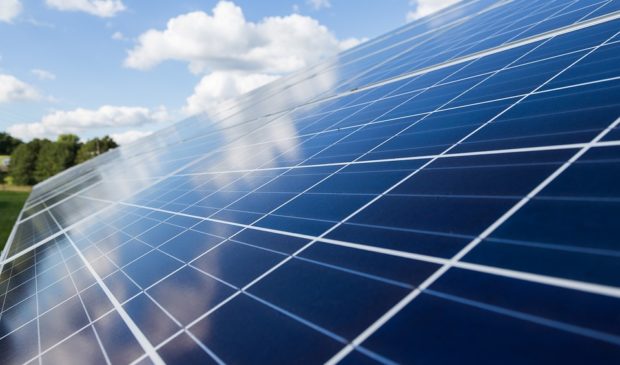Austin Energy proposes local solar farm
Monday, October 1, 2018 by
Jack Craver In spite of the tremendous appetite for renewable energy in Austin, the city doesn’t offer many opportunities to build the kind of large-scale wind and solar farms necessary to reduce reliance on fossil fuels.
“It’s an issue of land,” explained Khalil Shalabi, vice president of strategy, technology and markets for Austin Energy. “Land is expensive. You could build a building and charge rent.”
Hence, most of the renewable solar and wind power that Austin Energy purchases comes from West Texas, where the competition for land is not nearly as fierce. “Out in West Texas nobody is building buildings,” said Shalabi.
The utility is now presented with a rare opportunity to get a significant amount of solar power from a local source. It is currently in the process of negotiating a deal with a developer to build a 144-megawatt solar farm that the utility will buy energy from for at least 15 years.
AE will not yet disclose the location of the proposed site, only saying that it’s in the Austin metro area.
The proposed solar farm was submitted to AE in response to a request for proposal from the utility. The RFP did not specify the location or type of renewable energy. If it is approved by City Council, it should be in operation by 2020.
While the utility already generates about a third of its power from renewable sources, it is under pressure from Council and Austin’s very active environmental community to further bolster its renewable portfolio. A 10-year generation plan adopted by Council last year calls on the utility to generate 65 percent of its energy from renewable sources by 2027.
The project that AE selected “stood out in that it was both economic and local, which is very rare,” said Shalabi.
Currently, much of the renewable power is coming from wind or solar farms hundreds of miles away in West Texas. That means the power has to travel a long way through transmission lines, which adds to the cost.
Shalabi couldn’t offer specifics on price yet either. “I can tell you it’s a good price, it’s local and it’s going to save our customers money,” he said.
Austin Energy’s peak load – achieved when energy consumption is highest because air conditioners are blasting – is about 2,800 megawatts, or 2.8 gigawatts. Its average load, however, is closer to 2 gigawatts. That means that if the solar facility is at full capacity, it could account for 5-7 percent of the utility’s total generation.
However, a solar farm is rarely producing at capacity simply because the sun is rarely shining to its full potential. Solar facilities typically are producing at between 25 and 30 percent capacity, said Shalabi.
Most renewable energy sources are not “dispatchable.” The power is available when the wind is blowing or the sun is shining, but it is not stored and available for use whenever it is needed, as is the case with fossil fuels.
Batteries to store renewable power exist but are currently very expensive. AE currently has one battery that stores up to 2 megawatts of power generated by La Loma Community Solar Farm, a small facility in East Austin that opened earlier this year.
However, due to rapid technological innovation, Shalabi anticipates the cost of batteries coming down dramatically in the next few years. That will hopefully set the utility up to achieve the 30 megawatts of storage capacity that the 10-year generation plan calls for.
The Austin Monitor’s work is made possible by donations from the community. Though our reporting covers donors from time to time, we are careful to keep business and editorial efforts separate while maintaining transparency. A complete list of donors is available here, and our code of ethics is explained here.
You're a community leader
And we’re honored you look to us for serious, in-depth news. You know a strong community needs local and dedicated watchdog reporting. We’re here for you and that won’t change. Now will you take the powerful next step and support our nonprofit news organization?







